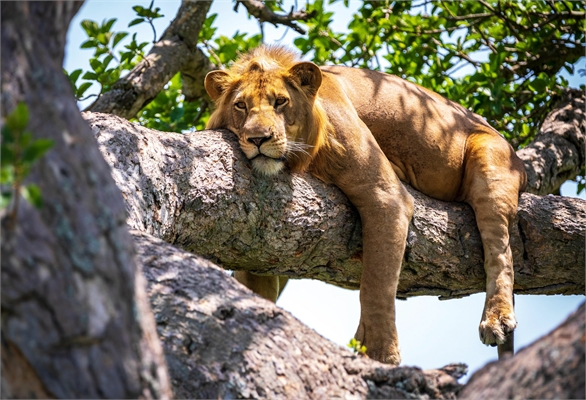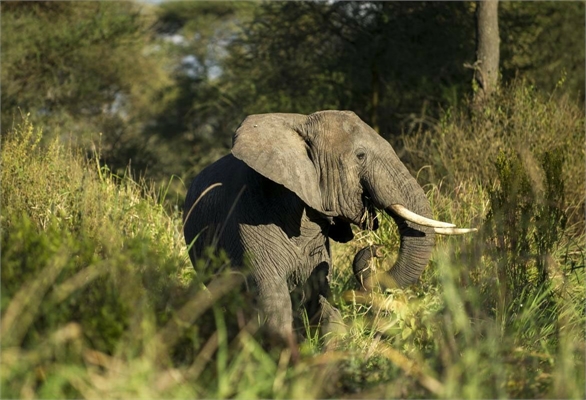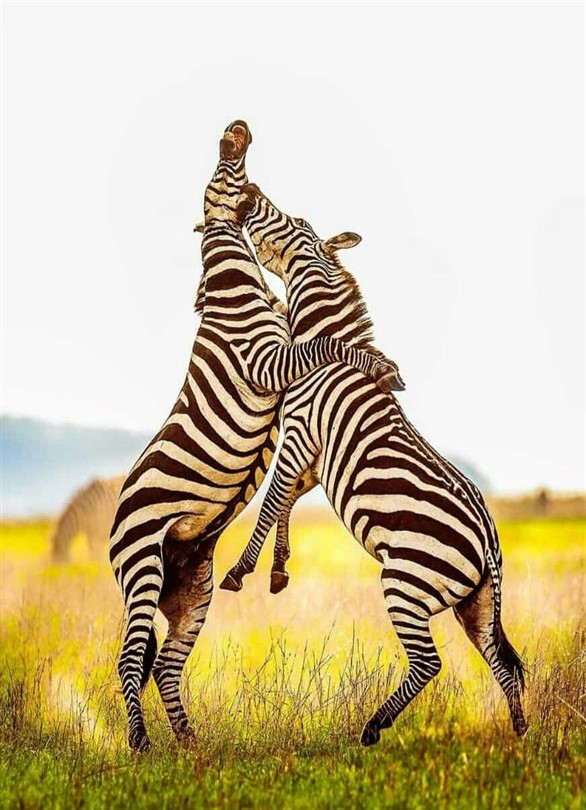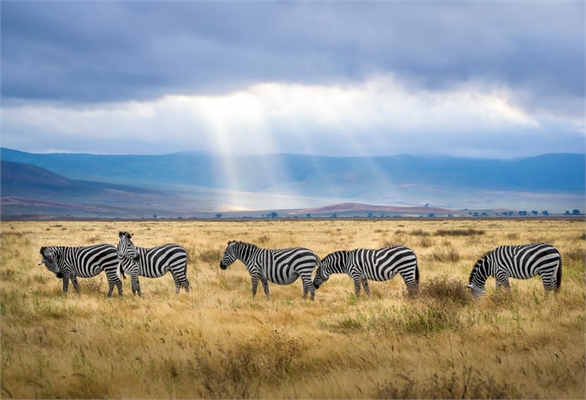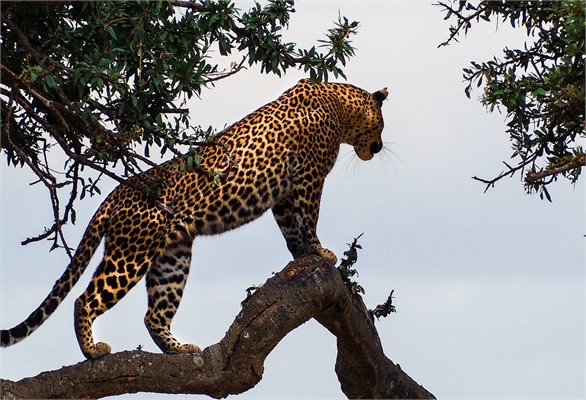Lake Manyara National Park
Nestled at the base of the Great Rift Valley in northern Tanzania, Lake Manyara National Park is a haven of unparalleled natural beauty and biodiversity. Despite being one of the smaller parks in the region, covering approximately 330 square kilometers, it holds a unique charm that makes it a favorite among travelers. With its shimmering lake, lush forests, and diverse wildlife, the park offers a microcosm of Tanzania’s ecological wonders, creating a magical experience for visitors.
The heart of the park is its namesake, Lake Manyara, a shallow, alkaline lake that covers two-thirds of the park’s area during the rainy season. The lake is not only a visual spectacle but also a critical habitat for countless species. As you approach the park, the reflection of the sky and the surrounding escarpment on the water creates a serene and almost otherworldly atmosphere. The lake's waters are a sanctuary for an extraordinary variety of birds, earning it recognition as a Ramsar site and a birdwatcher’s paradise. Flamingos, in particular, create a breathtaking sight as they gather in vast numbers, their pink plumage forming a vibrant contrast against the blue waters. Pelicans, storks, herons, and countless other species thrive here, making it one of the most important avian habitats in East Africa.
However, Lake Manyara National Park is not just about its lake and birdlife. Its landscapes are a patchwork of diverse ecosystems, ranging from groundwater forests and acacia woodlands to open grasslands and rocky escarpments. As you enter the park, the lush, green canopy of the groundwater forest greets you, fed by underground springs that sustain this verdant oasis year-round. Towering mahogany, fig, and tamarind trees create a shaded sanctuary where baboons and blue monkeys frolic, and the air is filled with the calls of tropical birds.
This forest gives way to the iconic acacia woodlands, where the park’s most famous residents can often be found. Lake Manyara National Park is renowned for its tree-climbing lions, a rare behavior not commonly seen in other lion populations. These majestic cats rest high in the branches of acacia trees, perhaps to escape the heat or biting insects on the ground, offering visitors an unforgettable sight. Observing a lion perched lazily in a tree is a surreal experience, blending the unexpected with the magnificent.
The park’s wildlife extends far beyond its lions. Elephants, often in large herds, roam the park, moving gracefully through the forests and open spaces. These gentle giants, though imposing in size, add a sense of calm and wonder to the park's ambiance. Giraffes stride elegantly against the backdrop of the Rift Valley escarpment, while zebras and wildebeests graze peacefully on the grassy plains. Impalas, bushbucks, and other antelope species dart through the undergrowth, always alert to the presence of predators. Hippos wallow in the water near the lake’s edges, their comical grunts breaking the tranquil silence.
One of the most captivating aspects of Lake Manyara National Park is its location along the Great Rift Valley. The towering escarpment provides a dramatic backdrop to the park's already stunning landscapes. During the dry season, when the water recedes, the exposed lakebed shimmers under the sun, creating a stark yet beautiful contrast with the surrounding greenery. The escarpment itself is a geological wonder, rising sharply from the valley floor and offering sweeping views of the park, the lake, and the horizon beyond. It’s a reminder of the Earth’s powerful natural forces that have shaped this region over millions of years.
The park is also a testament to the interconnectedness of ecosystems and communities. Local Maasai tribes live near its boundaries, their vibrant culture and traditional lifestyles offering a glimpse into the harmony between humans and nature. The Maasai have long revered Lake Manyara and its surroundings, and their presence adds a cultural depth to the park’s appeal. Visitors often have the opportunity to learn about Maasai traditions and their efforts to preserve their heritage while coexisting with wildlife.
Lake Manyara National Park changes with the seasons, offering a unique experience at different times of the year. The wet season transforms the park into a lush paradise, with the lake swelling and wildlife congregating around the abundant water sources. In contrast, the dry season reveals the stark beauty of the exposed lakebed, and wildlife gathers at the remaining waterholes, making game viewing particularly rewarding. Each season brings its own rhythm to the park, and no visit is ever quite the same.
For many, a visit to Lake Manyara National Park is more than just a safari; it is an intimate encounter with nature’s artistry. Whether it’s the sight of flamingos dancing along the lake’s edge, the thrill of spotting a tree-climbing lion, or the simple pleasure of listening to the symphony of birdsong, the park leaves an indelible mark on the soul. It is a place where the landscapes and wildlife blend seamlessly, creating an environment that is as peaceful as it is alive with activity.
Lake Manyara National Park may not cover the vast expanses of larger parks like the Serengeti, but what it lacks in size, it more than compensates for in charm and diversity. Its compact nature makes it an ideal destination for those seeking a rich and varied safari experience in a short time. From its iconic tree-climbing lions to its dazzling array of birdlife, from the tranquility of its lake to the grandeur of its escarpment, the park is a jewel that shines brightly in Tanzania’s crown of natural wonders.
As you leave Lake Manyara National Park, the memories linger—a kaleidoscope of colors, sounds, and sights that capture the essence of Africa’s untamed beauty. It is a place where nature’s creativity is on full display, inviting you to pause, reflect, and marvel at the intricate tapestry of life. For those fortunate enough to visit, Lake Manyara is not just a destination; it is a journey into the heart of one of the world’s most extraordinary ecosystems.

